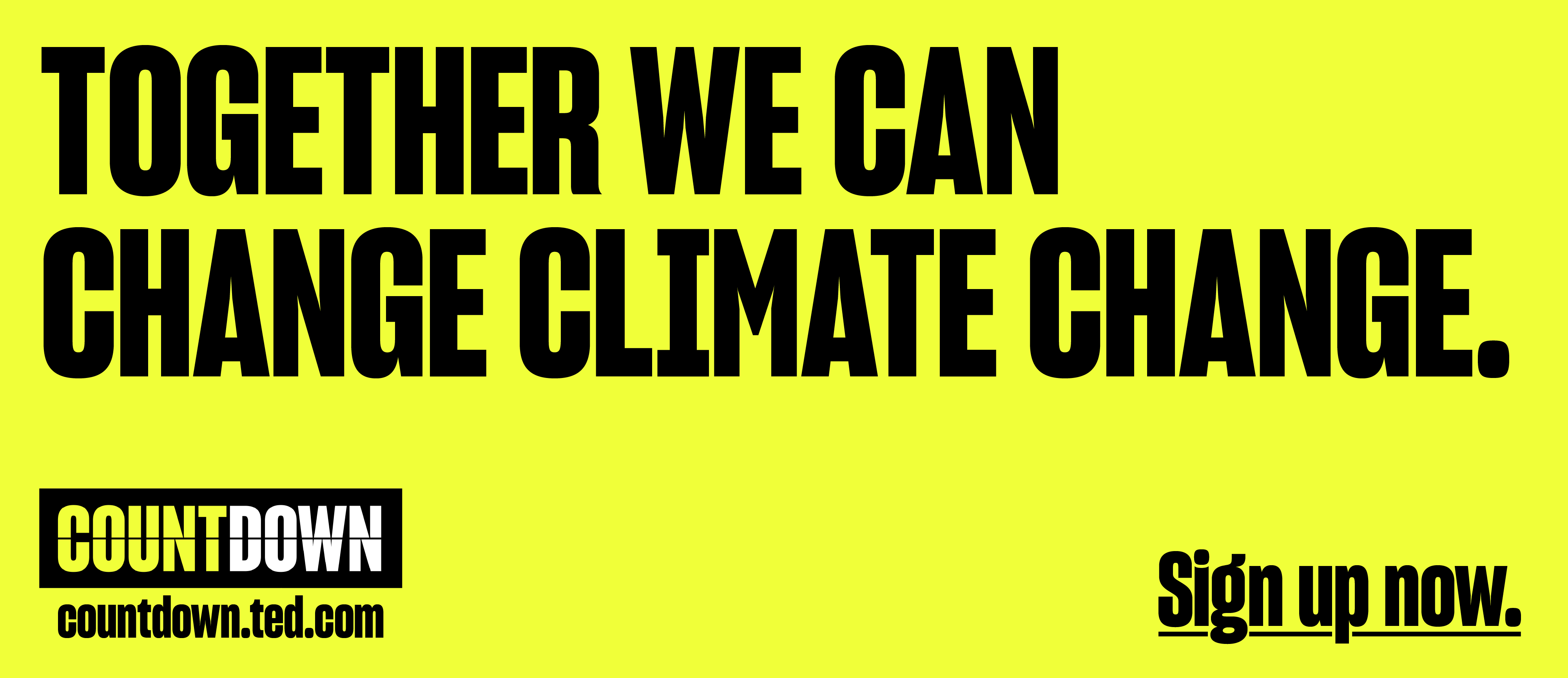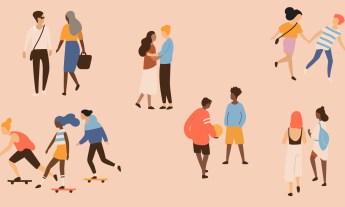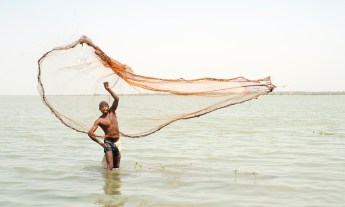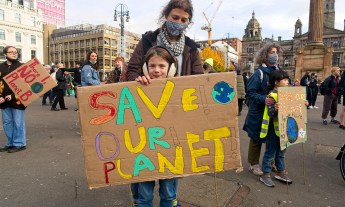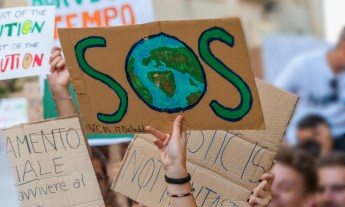
In October 2019, Jane Fonda launched “Fire Drill Fridays,” weekly protests centered on climate change and calling for an end to new fossil fuels, a just transition to a renewable economy, and demands that Congress pass the Green New Deal. The protests began in Washington DC, and in February 2020, Fonda joined forces with Greenpeace and other allies and the movement shifted to California and to communities across the country.
For thousands of years, a patriarchal paradigm has ruled. It’s the paradigm that has led to the climate crisis, an extractive, use-up-and-discard mentality that treats workers, those who are different, women and the natural world as commodities, at men’s disposal, for their enjoyment and their profit. Around the world, in countries such as Hungary, Brazil, India, the UK, Turkey, the Philippines, Russia and the US, we can see the apotheosis of this toxic mind-set in the nationalistic tyrants, strongmen and would-be dictators.
Under the millennial-old patriarchal rule, the feminine principle has been not destroyed but suppressed. The spiritual teacher Eckhart Tolle, in his book A New Earth, writes that this has “enabled the ego to gain absolute supremacy in the collective human psyche.”
He adds that it is harder for the ego to take root in the female than in the male because women are “more in touch with the inner body and the intelligence of the organism where the intuitive faculties originate,” have “greater openness and sensitivity toward other lifeforms,” and are “more attuned to the natural world.”
Men fear that becoming “we” will erase the “I,” the sense of self. For most women … our “we” has been our superpower.
I like to believe that this is true, but I know for sure that women have been socialized to be caregivers, more attentive to others. Perhaps this has something to do with why women tend to be less susceptible to the disease of individualism, are more conscious of our physical and spiritual links to the natural world, of our interdependence, of the importance of the well-being of the community at large, not just our small personal circle.
Men fear that becoming “we” will erase the “I,” the sense of self. For most women, our “I” has always been a little porous, whereas our “we” has been our superpower.
I think some of this goes back to our hunter-gatherer past. Men went out to try to spear animals and bring back meat. Anthropologists have written that on the occasion the hunter did bring back meat, which was often not the case, he would give it to his family or use it to curry favor with tribal leaders. It was the reliable food — tubers, nuts and berries — gathered by women, young and old, that made up the family’s daily nutrients.
And if a woman’s own family didn’t need the food, she would distribute it to other tribal members. And if the younger women were pregnant or nursing, older women did the foraging. Grandmothers would also help with birthing, care for newborns, and were indispensable in advising the younger women about where the best water was, the juiciest berries, the poisonous insects. Survival meant respecting the interconnectedness between women. They truly depended on each other, and I believe that is baked into our DNA.
This is of utmost importance now because the climate crisis we face is a collective crisis that requires collective, not individual, solutions. And the challenge is that for the last 40 years the idea of the collective, the public sphere, the commons, has been deliberately eroded and individualism has risen to take its place.
But individually we are powerless to make the needed systemic change. That’s why individualism works to the advantage of the relatively few who wield power, and that’s why we need to set aside our differences, unify around our common needs, because together is how we gain power.
According to Anthony Leiserowitz, a senior research scientist at Yale who studies public perceptions of climate change, the three countries where people are the least aware of the climate crisis are the US, Canada, and the UK. Why? Because, Leiserowitz says, those are the countries where individualism has taken root the most, especially in the last thirty years, fanned by conservative news outlets.
“Women are not better people than men. We just don’t have our masculinity to prove,” says Gloria Steinem.
But even in those countries, as everywhere on the planet, it’s women’s sense of our interdependence that helps explain why we are the ones who save not just our own families but also our communities during extreme weather events and what allows women to rise in greater numbers to face this collective climate emergency.
As Gloria Steinem says, “Women are not better people than men. We just don’t have our masculinity to prove.”
These are some of the reasons that women are at the forefront of climate solutions. But in many ways, they also bear the brunt of climate change. In developing countries, it’s women who are responsible for producing 40 percent to 80 percent of food. They plant the crops, harvest them, fetch the water and chop the wood, the things that allow their families to survive. And because of climate change, when crops are failing and water is scarce, women sometimes have to walk for days and still may not find these lifesaving resources. Climate change makes their job much harder.
Women also make up 80 percent of climate refugees — people who are displaced because of extreme weather events — and they are among the last to be rescued from those crises. Studies have shown that women are 14 times more likely to die in a climate-related disaster than men.
What’s more, women carry more body fat than men do. It is in that fat that a disproportionate “body burden” of fossil-fuel-based pollutants, pesticides and chemicals is sequestered that can cause health issues such as cancers and can be spread to children in utero or through breast milk.
Here’s something that you may not know that I learned that week as I studied women and climate change for our Fire Drill Friday. Reports show that there are significant increases in rape, sexual assault and domestic violence in places experiencing climate- related disasters like floods and earthquakes or environmental destruction like mining, fracking, or drilling. When oil pipelines and fracking sites are under construction, it brings an influx of thousands of men into rural areas and on indigenous reservations where they are housed in “man camps.”
In the tar sands of Alberta, Canada, and in the Bakken oil fields of North Dakota, there’s been a surge in sexual violence against Indigenous women. North Dakota has at least 125 cases of missing native women, although the numbers are likely higher because records are not officially kept. Patina Park, executive director of the Minnesota Indian Women’s Resource Center, said, “We can’t be surprised that people who would rape our land are also raping our people.
We are never going to solve climate change — or a whole host of related challenges — without women in leadership positions. The more we have women leading the climate movement, the stronger our movement will be. Countries where women lead embrace international climate treaties more often than those led by men. Paul Hawken’s “Drawdown” study, which examined the top ways to reduce carbon in the atmosphere, found that educating girls and empowering women was one of the most effective climate solutions.
So, for those who identify as a woman, start by finding a community that can support (and hopefully join) you as you develop your climate activism, especially if you find yourself pigeonholed into more traditional roles.
Those who do not identify as a woman, take steps to support the women-identified people in your lives. Take on your fair share of the housework and child rearing at home and logistical and administrative work in the office, freeing women to lead. If you are part of a climate campaign or organization, make sure you’re not unconsciously limiting the participation of women. If there’s not a good gender balance, find out what you can do to make this work more welcoming for women. If you want to advance equal pay and equal rights, the American Association of University Women is a good place to start.
The vast majority of the world’s farmers are women, and women farmers have proven to be better environmental stewards of the land.
Whether women have a choice about having and raising children is critical for climate justice. Educating and empowering women lead to fewer unwanted pregnancies and more opportunities for women. The climate crisis disproportionately harms poor women and women of color, who are also the most burdened with child rearing and other forms of care work. Learn more about reproductive justice and gender justice by joining organizations like SisterSong, Forward Together, National Domestic Workers Alliance and One Billion Rising.
The vast majority of the world’s farmers are women, and women farmers have proven to be better environmental stewards of the land. We have seen this in the Chipko, or “tree hugger,” movement started by Indian women farmers in the 1970s and the green belt movement that planted thousands of trees in Kenya, founded by Wangari Maathai, the environmental activist and mother of three who won the Nobel Peace Prize for this work in 2004.
Organizations like Food First and La Via Campesina work to protect women’s rights to their land, including economic and civil rights, and safeguard them from sexual assault and violence. Educate yourself about the ongoing crisis of murdered and missing Indigenous women, a disproportionate number of whom have disappeared near fossil-fuel extraction and fracking sites across North America. Raise awareness of this tragedy by supporting organizations like the Minnesota Indian Women’s Resource Center, and encourage your friends and family to do the same.
Support young women-led organizations like Greta Thunberg’s School Strike for Climate, Future Coalition and Fridays for Future. Funnel resources into grassroots, women-led groups that focus on climate and gender equity and offer to get involved. Some of my favorites are Women’s Earth Alliance, Women’s Earth and Climate Action Network (WECAN) International, African Women Unite Against Destructive Resource Extraction (WoMin), and Women’s Environment & Development Organization (WEDO).
Winona LaDuke’s Hemp & Heritage Farm is another Indigenous-women-led organization to support. This longtime environmental activist, who joined Fire Drill Fridays in DC, is resisting fossil fuel pipelines and also growing hemp for renewable energy. Check out her innovative work.
Elect more women to public office and other leadership positions, and make sure women are at the table when climate crisis solutions and environmental justice are being discussed, such as the Green New Deal. (There’s even a Feminist Agenda for a Green Deal, developed by women leaders around the world.) Be sure the women you’re electing are committed to climate, social and environmental justice. The British prime minister Margaret Thatcher’s legacy is one of the worst for the environment and women’s, workers’ and immigrants’ rights. Do your homework, and make sure women leaders know you’re counting on them to do right by their gender, as well as the whole planet.
You can also encourage women to vote. The Yale Program on Climate Change Communication has documented that women are more concerned about climate and more supportive of government action than men. So let’s get women to the polls and vote for climate leaders. And let’s work to make sure there are climate-committed women running for election up and down every ticket around the world. Groups like EMILY’s List have helped make this happen when it comes to reproductive choice; organizations like the Women’s March are focusing on climate and reproductive justice in 2020. Join in solidarity with your sisters around the globe.
Excerpted from the new book What Can I Do?: My Path from Climate Despair to Action by Jane Fonda. Reprinted with permission from Penguin Press, a division of Penguin Random House LLC. © 2020 Jane Fonda.
Watch Jane Fonda’s conversation at TEDWomen now:

